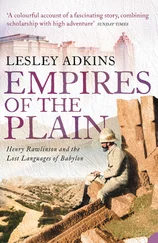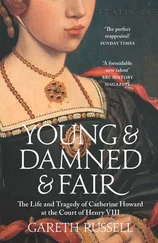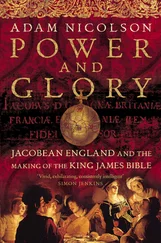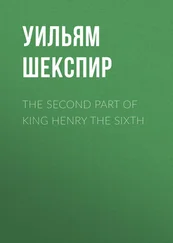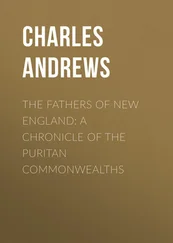In autumn 1498, Suffolk and a group of courtiers had been involved in an argument outside Aldgate, on London’s eastern edge, which spilled over into a mass brawl in which three men were killed. Suffolk, who had already failed to turn up to one legal hearing earlier in the year on unrelated charges, was hauled before the judges of King’s Bench, the royal criminal court in Westminster Hall, and indicted for murder. On the face of it, this seemed a display of the efficiency and impartiality of royal justice but, even setting aside Suffolk’s outrage at being charged for the killing of a commoner, there were several curious things about the case. First was the involvement of one of Henry’s closest counsellors, Sir Reynold Bray, who had personally delivered the indictment against Suffolk. Then came the detailed coroner’s inquest, which made no mention of Suffolk having struck a fatal blow. And finally, courtiers of far lesser rank, favoured jousters such as Roland de Veleville and Matthew Baker, regularly got away – quite literally – with murder. Meanwhile, Henry was forcing Suffolk to beg for pardon. 19
Highly sensitive to this perceived slight on his honour, Suffolk refused to do so. Instead, he left England. His timing could not have been worse. With the Warbeck endgame being played out amid reports of unrest in East Anglia, and with John de Vere, earl of Oxford, Henry’s chief man in the region, uncovering a similar plot to groom a pretender in Cambridge, Suffolk’s flight to the Habsburg-controlled Low Countries must have looked suspiciously like a re-run of Lincoln’s own plot twelve years previously.
Henry took it very seriously indeed. His response was to threaten a repeat of the economic sanctions that had so destabilized the Netherlands during the 1490s, and which Philip of Burgundy badly wanted to avoid. With Suffolk himself, Henry’s approach was delicate: he could not risk the earl’s departure turning into outright rebellion. He afforded Suffolk the honour of a diplomatic visit headed by Sir Richard Guildford, complete with an official communiqué to be shown to the recalcitrant earl. In the customary private briefing issued to Guildford, Henry instructed him to talk to the earl as it were off the record, as if ‘without the king’s knowledge’. Seeming to speak with Suffolk’s own well-being at heart, Guildford was to persuade him to see sense. Henry wanted Suffolk to return, not as his captive, but of his own free will, as Henry’s loyal subject, which would best stand with the king’s ‘great honour, both within his realm and without’. If he did so, then he could ‘in time’ regain favour and ‘enjoy that [which] he had when he departed’. If not, well, ‘he may never look to recover nor come to again’. Any further disloyalty could only bring about his ‘utter clear destruction’. Suffolk came back. 20
So when, at the Calais summit meeting, Garter king-of-arms John Writhe threw down the gauntlet on Suffolk’s behalf in an impeccably turned expression of fealty to Henry VII, Philip, who had welcomed Suffolk as a fugitive the previous year, would not have missed the point. Neither would the ambassadors assembled from the courts of Europe, nor the people of Calais, a town of unpredictable allegiances. For Henry, the conventional protestations of service and loyalty to the crown took on a particularly satisfying resonance. Suffolk, proclaimed Writhe, ‘humbly begged’ Henry to let him and a select team of companions joust in honour of the king and the forthcoming marriage ‘and’, he stressed, ‘for no other cause or intention’. 21For good measure, copies of Suffolk’s challenge, in French, were given to Archduke Philip, to the French herald for Charles VIII of France, and dispatched to James IV of Scotland, another erstwhile sponsor of Warbeck; in addition, the Spanish ambassador sent a copy to Ferdinand and Isabella. Henry had, it seemed, successfully corralled Suffolk into his dynastic plans.
Underneath the pomp and ceremony of the English court’s progress to Calais there had been a pervasive sense of panic. An epidemic of plague was sweeping London and the southeast, and mortality rates were staggeringly high. The London chronicler Robert Fabyan, an influential draper and city alderman, put the total deaths at twenty thousand – between a third and a half of the city’s entire population. It may have been the plague that carried off the infant Prince Edmund, Henry and Elizabeth’s youngest child and third son, who died on 19 June and was buried in state three days later at Westminster Abbey. 22Another victim may have been Henry’s chancellor, John Morton, who died that September at the age of eighty. Almost to the end, this supreme architect of Henry’s reign, with his ‘deep insight in politic worldly drifts’, had remained an ever-observant presence at the king’s side. For Henry, the loss was immense. Lawyer, politician, administrator, archbishop and cardinal, Morton had navigated the dynastic changes of the past half-century with a considered daring, his adaptability matched by his resolute belief in strong, forceful kingship. Of all Henry’s small group of close advisers, his chancellor, a generation older than the rest, had perhaps been the most influential, his mild appearance belying a precise ruthlessness. Henry had learned much from him. 23
These losses were tempered by the coming wedding. Late in 1500, another proxy marriage was enacted now that Arthur had reached the legitimate marriageable age of fourteen, the Spanish ambassador de Puebla again acting the part of the absent bride with great gusto. The pair exchanged vows, the contract per verba de praesenti required by canon law. The marriage was now legally indissoluble and the wedding itself confirmed for the following September. After much wrangling, the conditions and method of payment for Catherine’s marriage portion, or dowry, were finalized, and the list of Catherine’s Spanish servants who would remain with her as part of her new, English, household agreed upon. As he described the tortuous conclusion to the negotiations, de Puebla’s customary optimism acquired a brittle edge. That December, Henry had summoned him to his privy chamber with ‘all sweetness’; then, his mood clouding over, had turned on the harassed ambassador, blaming him for having held up the marriage through his ‘shifts and evasions’. Dealing with the calculating English king over Catherine’s dowry had, de Puebla sighed to Ferdinand and Isabella, been a ‘nightmare’. 24
The scale of the marriage plans had produced a contradictory reaction in the pious Queen Isabella. Professing herself delighted at the magnificence of the preparations and the consequent honour done to her daughter, her fastidious asceticism nevertheless baulked at their luxury. Perhaps finding Henry and Elizabeth’s ambitions for wedding glamour a touch vulgar – they had implored Isabella that the Spanish ladies accompanying Catherine to England should be beautiful, or at the very least that ‘none of them should be ugly’ – she begged Henry to ‘moderate the expenses’. There was nothing wrong with rejoicings, she wrote, but the ‘substantial part of the festival should be his love … the princess should be treated by him and by the Queen as their true daughter’. 25
As the time for Catherine’s departure grew near, misgivings may well have crept into Isabella’s mind. Of her six children, her eldest daughter and two sons had died, and two of her remaining three daughters had already been married off. Catherine’s eldest sister, the beautiful but fragile Juana, was beginning to show signs of mental deterioration following her high-profile wedding to Archduke Philip of Burgundy five years previously. Catherine, cloistered but with a natural resourcefulness, was made of sterner stuff. But Isabella knew well the brutal realities of such marriage negotiations, and she wanted her daughter to be more than a political trophy: to be treated humanely and with kindness by her new family.
Читать дальше






